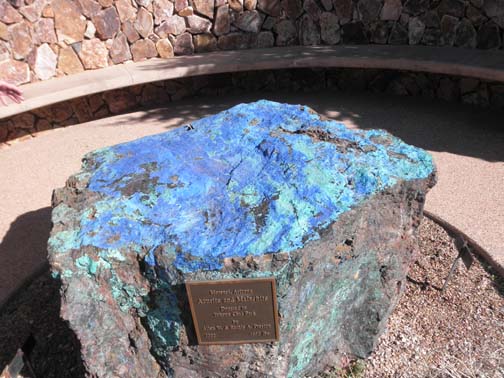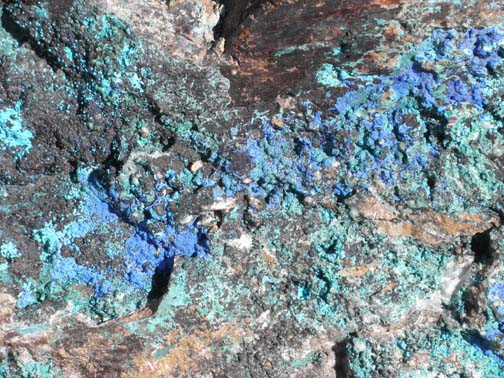One of the most spectacular mineral colors is azurite/malachite, which was at one time abundant and found in many places around the world including Arizona. It has been used by both artists of the past and today. This magnificent chunk is at the Tohona Botanical Garden in Tucson, AZ. The color absolutely made my heart go flip flop when I first gazed upon it. It measures about 3 feet across and 3 feet high. You can see why it is so popular to artists.
Many of the pigments used by Native Americans of the Southwest are synonymous with those used by artists of other cultures all over the world. Most of those colors are found in nature right in the Southwest region. These organic and mineral colors include earth tones, ochres, umbers, cochineal, azurite/malachite, and cinnabar.
Have you seen this at the Botanical Garden? Did it make your heart pound too? I will be using this pigment in this Lessons from the Spider Woman project.
A view from the top surface.



Hi,
I bet there was more blue there before you left 🙂
Kind regards,
José